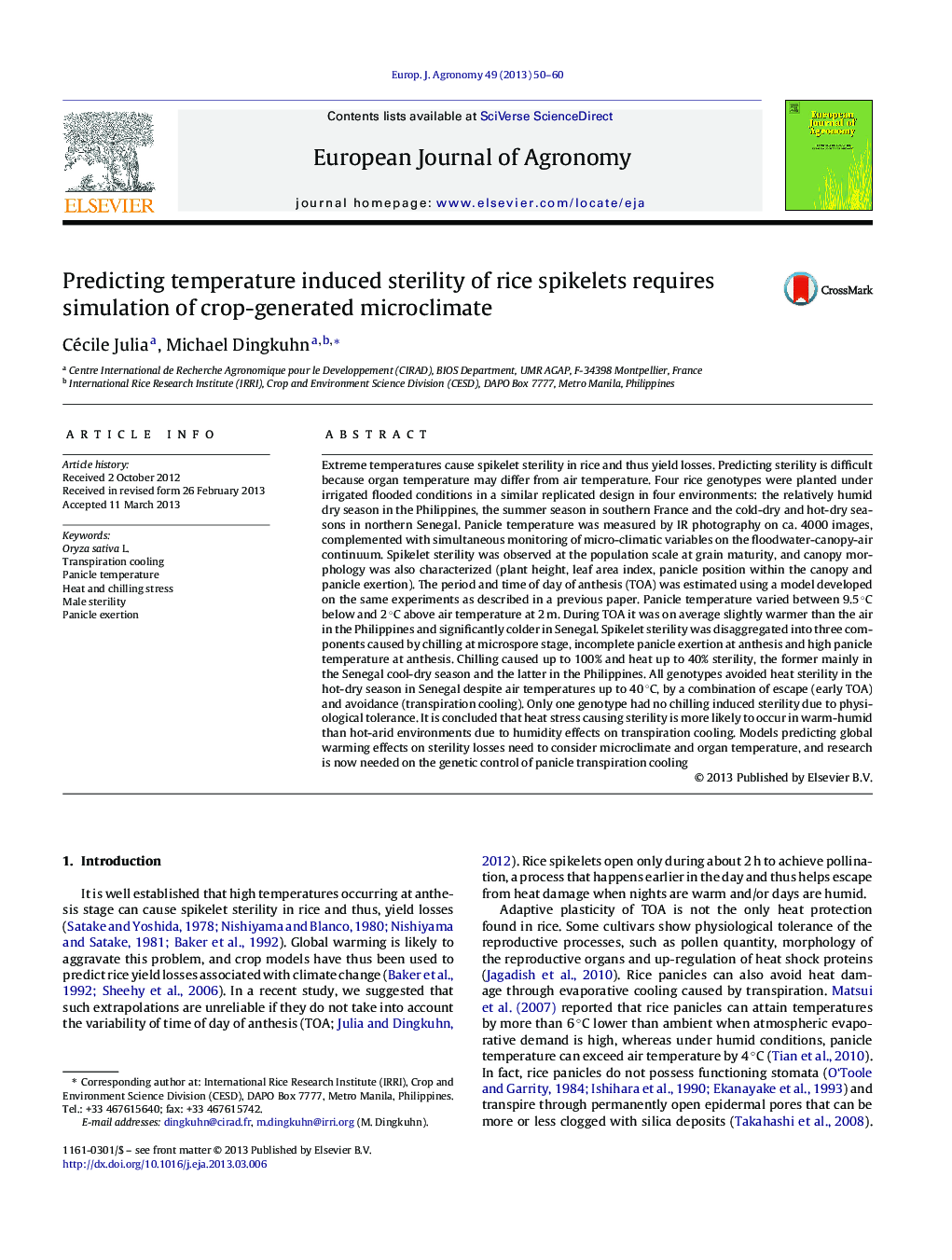| کد مقاله | کد نشریه | سال انتشار | مقاله انگلیسی | نسخه تمام متن |
|---|---|---|---|---|
| 4509087 | 1624477 | 2013 | 11 صفحه PDF | دانلود رایگان |

• Heat and chilling stresses cause spikelet sterility in rice, resulting in yield loss.
• Microspore, heading and anthesis stages are most sensitive.
• Organ temperature determines sterility, requiring information on micro-climate.
• Rice avoids stress by panicle transpiration cooling and escapes from it by adaptive time of day of anthesis.
• Warm-humid conditions cause more heat stress than hot-arid conditions.
Extreme temperatures cause spikelet sterility in rice and thus yield losses. Predicting sterility is difficult because organ temperature may differ from air temperature. Four rice genotypes were planted under irrigated flooded conditions in a similar replicated design in four environments: the relatively humid dry season in the Philippines, the summer season in southern France and the cold-dry and hot-dry seasons in northern Senegal. Panicle temperature was measured by IR photography on ca. 4000 images, complemented with simultaneous monitoring of micro-climatic variables on the floodwater-canopy-air continuum. Spikelet sterility was observed at the population scale at grain maturity, and canopy morphology was also characterized (plant height, leaf area index, panicle position within the canopy and panicle exertion). The period and time of day of anthesis (TOA) was estimated using a model developed on the same experiments as described in a previous paper. Panicle temperature varied between 9.5 °C below and 2 °C above air temperature at 2 m. During TOA it was on average slightly warmer than the air in the Philippines and significantly colder in Senegal. Spikelet sterility was disaggregated into three components caused by chilling at microspore stage, incomplete panicle exertion at anthesis and high panicle temperature at anthesis. Chilling caused up to 100% and heat up to 40% sterility, the former mainly in the Senegal cool-dry season and the latter in the Philippines. All genotypes avoided heat sterility in the hot-dry season in Senegal despite air temperatures up to 40 °C, by a combination of escape (early TOA) and avoidance (transpiration cooling). Only one genotype had no chilling induced sterility due to physiological tolerance. It is concluded that heat stress causing sterility is more likely to occur in warm-humid than hot-arid environments due to humidity effects on transpiration cooling. Models predicting global warming effects on sterility losses need to consider microclimate and organ temperature, and research is now needed on the genetic control of panicle transpiration cooling
Journal: European Journal of Agronomy - Volume 49, August 2013, Pages 50–60